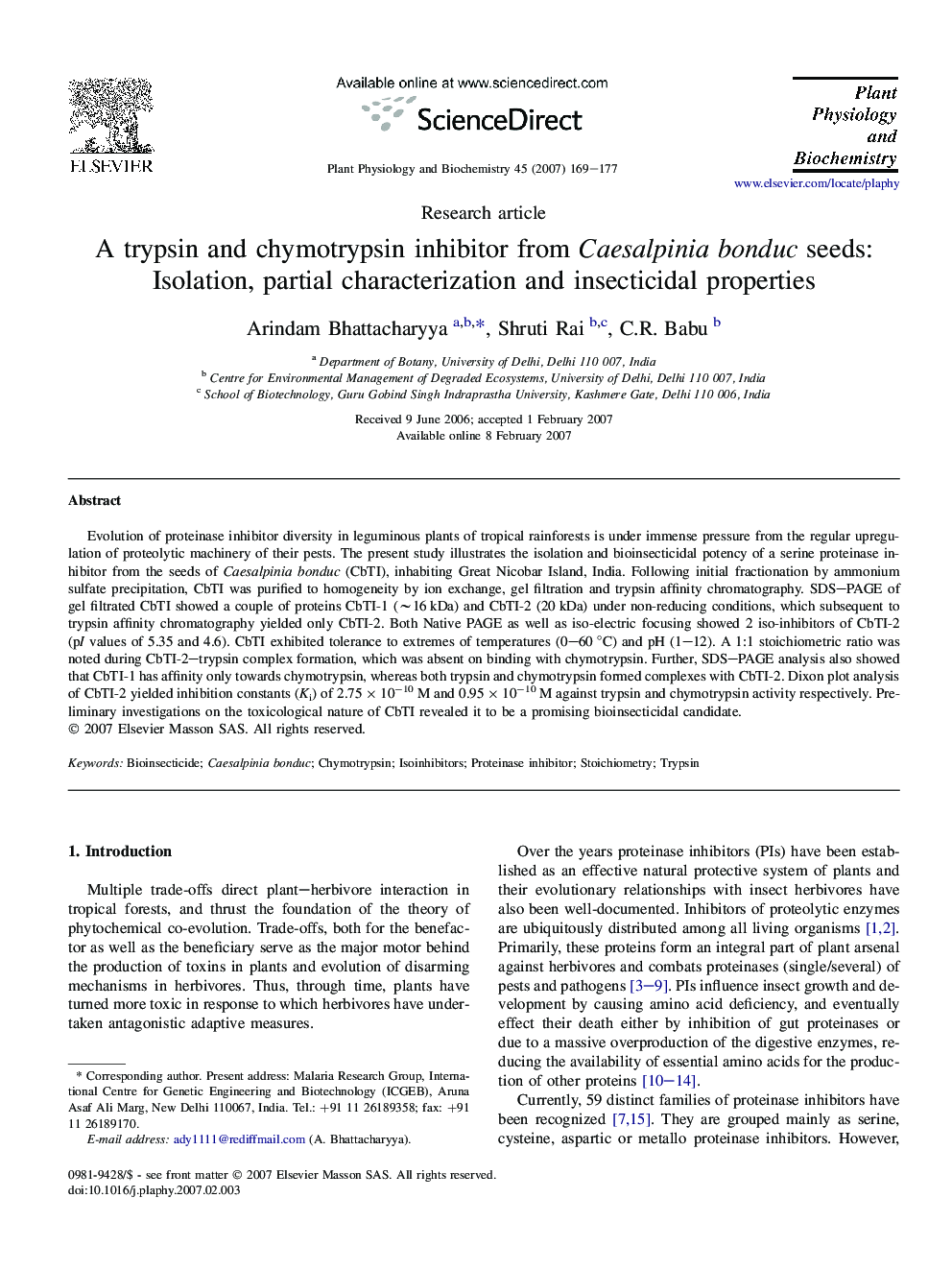| Article ID | Journal | Published Year | Pages | File Type |
|---|---|---|---|---|
| 2015582 | Plant Physiology and Biochemistry | 2007 | 9 Pages |
Evolution of proteinase inhibitor diversity in leguminous plants of tropical rainforests is under immense pressure from the regular upregulation of proteolytic machinery of their pests. The present study illustrates the isolation and bioinsecticidal potency of a serine proteinase inhibitor from the seeds of Caesalpinia bonduc (CbTI), inhabiting Great Nicobar Island, India. Following initial fractionation by ammonium sulfate precipitation, CbTI was purified to homogeneity by ion exchange, gel filtration and trypsin affinity chromatography. SDS–PAGE of gel filtrated CbTI showed a couple of proteins CbTI-1 (∼16 kDa) and CbTI-2 (20 kDa) under non-reducing conditions, which subsequent to trypsin affinity chromatography yielded only CbTI-2. Both Native PAGE as well as iso-electric focusing showed 2 iso-inhibitors of CbTI-2 (pI values of 5.35 and 4.6). CbTI exhibited tolerance to extremes of temperatures (0–60 °C) and pH (1–12). A 1:1 stoichiometric ratio was noted during CbTI-2–trypsin complex formation, which was absent on binding with chymotrypsin. Further, SDS–PAGE analysis also showed that CbTI-1 has affinity only towards chymotrypsin, whereas both trypsin and chymotrypsin formed complexes with CbTI-2. Dixon plot analysis of CbTI-2 yielded inhibition constants (Ki) of 2.75 × 10−10 M and 0.95 × 10−10 M against trypsin and chymotrypsin activity respectively. Preliminary investigations on the toxicological nature of CbTI revealed it to be a promising bioinsecticidal candidate.
